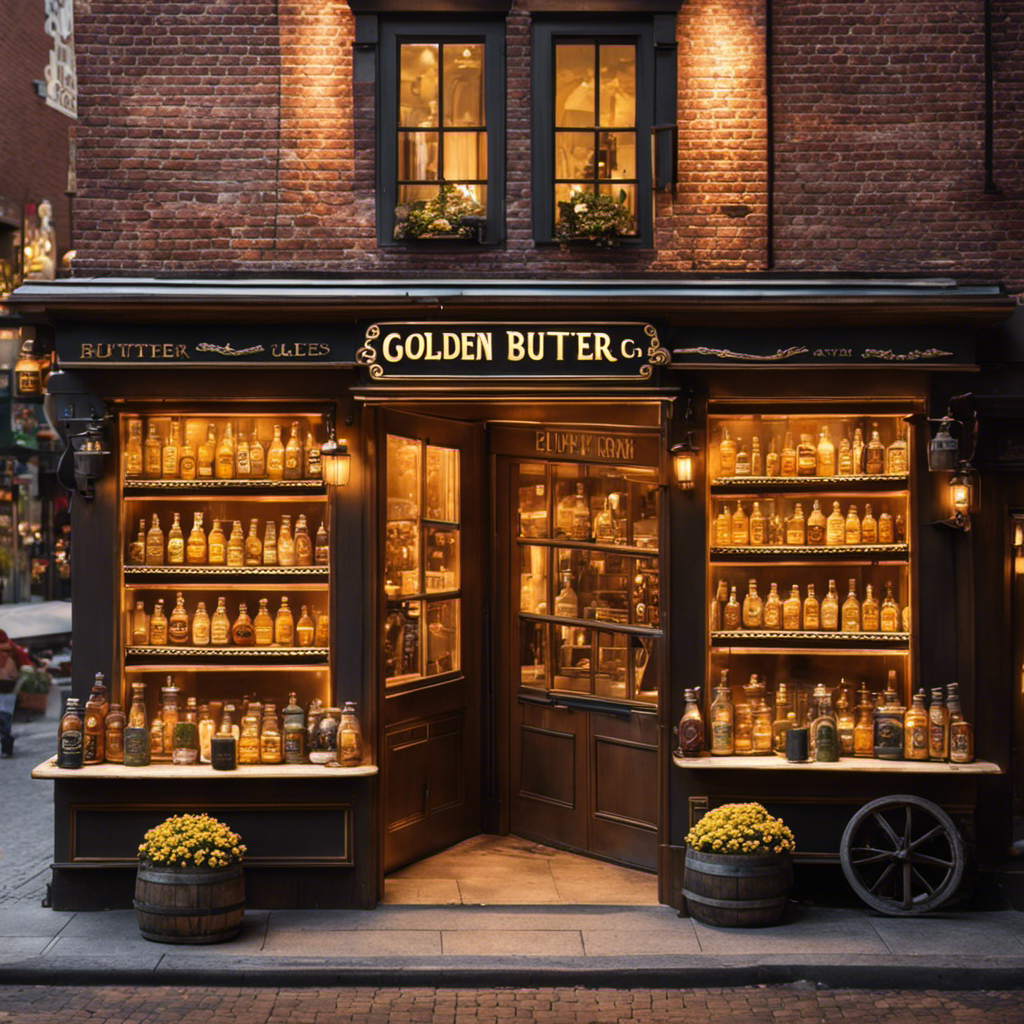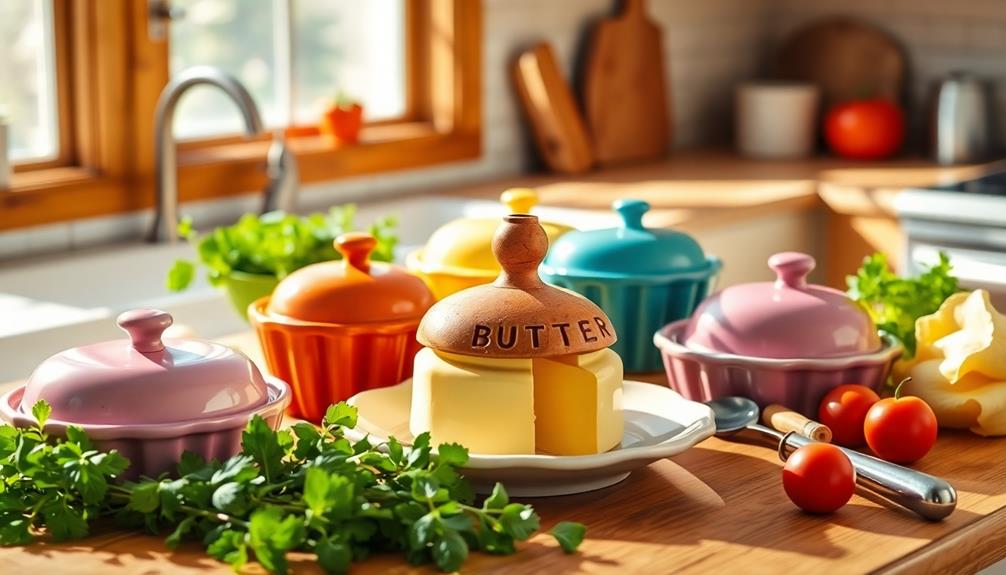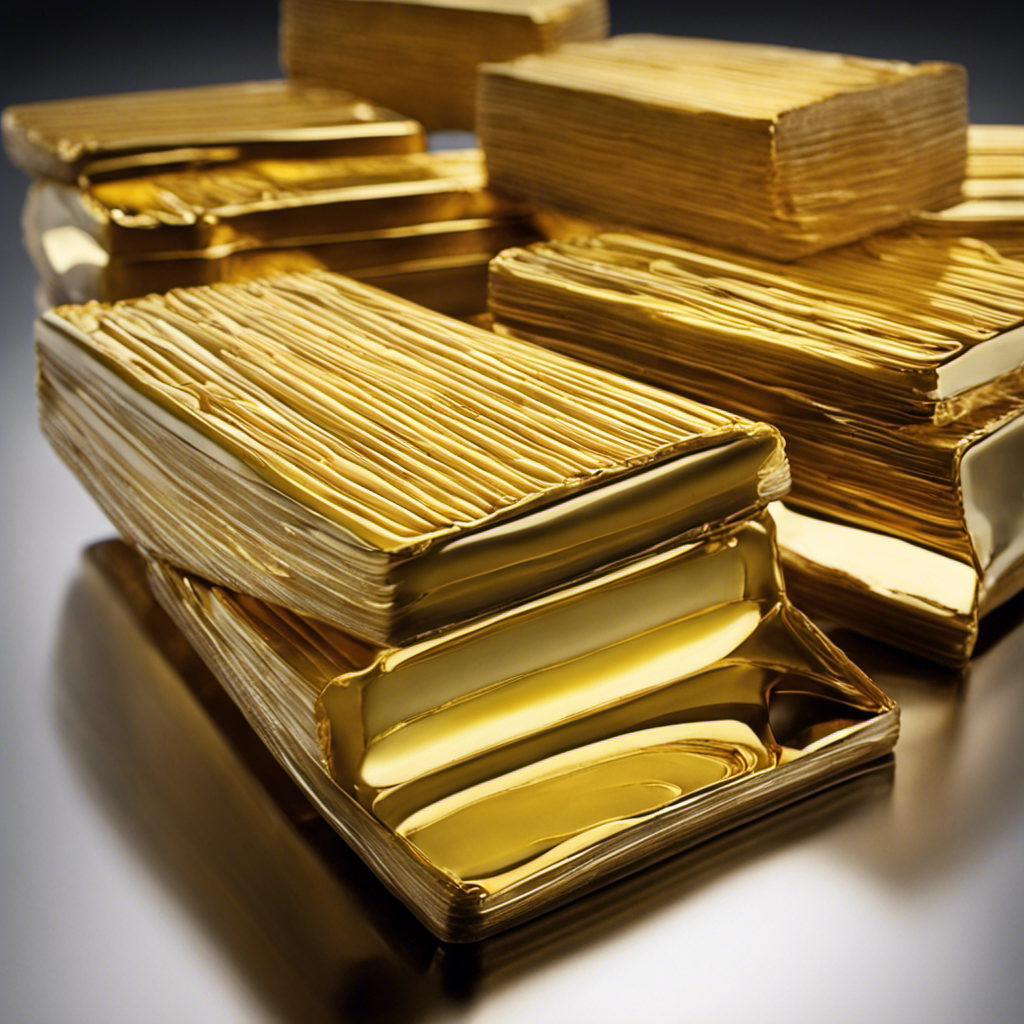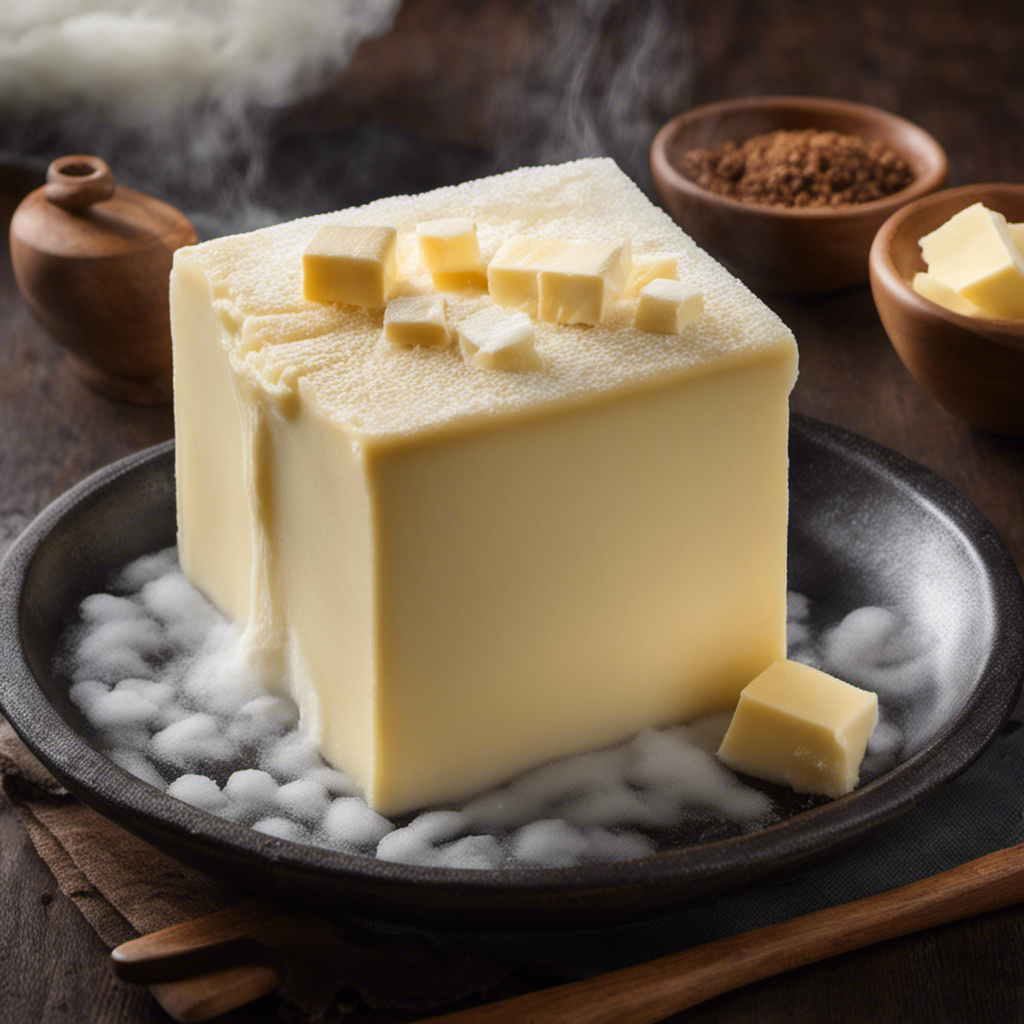Being an avid Harry Potter enthusiast has naturally led me to acquire a taste for butter beer.
Did you know that butter beer has become increasingly popular in recent years? Well, the good news is that there are plenty of places where you can satisfy your butter beer cravings.
In this article, I will share with you the various options available, from local grocery stores and specialty beverage shops to online retailers and even Harry Potter theme parks.
So, let’s dive in and discover where you can find this magical drink!
Key Takeaways
- Butter beer can be purchased at various locations such as local grocery stores, specialty beverage shops, online retailers, Harry Potter theme parks, candy shops, Harry Potter merchandise stores, breweries and distilleries, wizarding cafes and restaurants, farmers markets and craft fairs, and from local vendors.
- There are various variations and flavors of butter beer available, including options with hints of caramel, butterscotch, or spice, creative twists like caramel or chocolate-infused options, fruity flavors like strawberry or raspberry, and exotic options like chai or lavender.
- The best places to buy butter beer include a cafe downtown with a wide range of flavor variations, Harry Potter theme parks for an immersive experience, candy shops for a cozy atmosphere and to support local businesses, local vendors for unique flavor variations and sustainability, and DIY recipes and homemade versions for experimentation and cost-effectiveness.
- The price and availability of butter beer can vary depending on the establishment and season, so it is recommended to inquire with cafes directly for accurate pricing and seasonal availability. Exploring different cafes and local candy shops can help find budget-friendly options. Additionally, there are other experiences and benefits associated with butter beer, such as brewery and distillery tours, wizarding cafes and restaurants for unique dining experiences, Harry Potter merchandise stores for a wide selection of magical items, and farmers markets and craft fairs for unique flavors and products from local vendors.
Local Grocery Stores
You can find butter beer at your local grocery stores. It’s an artisanal beverage that is gaining popularity among Harry Potter fans and beverage enthusiasts alike. Local breweries have started producing their own versions of this magical drink, and it has become readily available in many stores.
Butter beer is a delicious, sweet treat that combines the flavors of butterscotch and cream soda. It has a frothy texture and a rich, indulgent taste. When you take a sip, you can feel the smoothness of the cream and the warmth of the butterscotch.
It’s the perfect drink to enjoy on a cozy evening or when you want to indulge in something special. So, next time you’re at your local grocery store, make sure to pick up a bottle of butter beer and experience the magic for yourself.
Specialty Beverage Shops
There’s a shop downtown that sells unique beverages like butter beer. This shop is a hidden gem for anyone looking to add a touch of magic to their wizarding events or themed parties. Here are four reasons why this shop is a must-visit:
-
Wide selection: They offer an extensive range of specialty drinks, including butter beer, which is a sweet and creamy concoction that will transport you to the wizarding world.
-
Authentic flavors: The shop takes pride in using high-quality ingredients to capture the true essence of each beverage. Every sip will make you feel like you’re at Hogwarts.
-
Creative twists: In addition to classic flavors, they also offer innovative variations of butter beer, such as caramel or chocolate-infused options. These unique twists will add excitement to any party.
-
Charming ambiance: The shop’s cozy interior is adorned with magical decor, creating a whimsical atmosphere that will make you feel like you’ve stepped into a wizard’s tavern.
Whether you’re planning a wizarding event or simply looking for a fun drink to enjoy, this shop is the perfect destination to find unique and enchanting beverages.
Online Retailers
If you’re looking for convenient shopping options, online retailers offer a wide variety of products at your fingertips. When it comes to specialty beverages like butter beer, online delivery is a great way to get your hands on it.
Many online retailers specialize in unique and hard-to-find drinks, making it easier for consumers to find and purchase their favorite beverages. One of the advantages of online shopping is the ability to have your order delivered right to your doorstep. And the best part is, some online retailers even offer international shipping, so no matter where you are in the world, you can enjoy the taste of butter beer.
Harry Potter Theme Parks
The Harry Potter theme parks offer a magical experience with attractions inspired by the beloved books and movies. Here are four reasons why visiting the theme parks is a must for any Harry Potter fan:
-
Immersive Wizarding World: Step into the enchanting world of Harry Potter and explore meticulously recreated locations like Diagon Alley and Hogsmeade. The attention to detail is astonishing, making you feel like you’ve stepped right into the pages of the books.
-
Thrilling Rides: From the iconic Hogwarts Express to the adrenaline-pumping roller coasters, the theme parks offer a variety of exhilarating rides that will leave you spellbound.
-
Interactive Experiences: Get your wand at Ollivanders and cast spells throughout the park, or take a tour of the famous Gringotts bank. These interactive experiences make you feel like a true witch or wizard.
-
Harry Potter Merchandise: The theme parks are a haven for Harry Potter merchandise. From wands and robes to magical creatures and Quidditch gear, you’ll find everything you need to immerse yourself in the wizarding world.
Whether you’re a die-hard fan or simply curious, the Harry Potter theme parks are a must-visit destination for anyone looking to experience the magic firsthand.
Wizarding World of Harry Potter
When it comes to the Wizarding World of Harry Potter, one of the most sought-after experiences is trying the famous Butter Beer.
Now, let’s dive into the discussion on the best Butter Beer, considering factors like taste, texture, and overall enjoyment.
Additionally, we will explore the price and availability of this magical beverage, ensuring that you are fully informed before your next visit to the park.
Best Butter Beer
You should definitely try the butter beer from that new cafe downtown, it’s the best! Here are four reasons why you should give it a try:
-
Best Flavor Variations: The cafe offers a wide range of delicious flavor variations for their butter beer. From classic butterscotch to creamy caramel and even a hint of chocolate, there’s a flavor for every palate.
-
Popular Brands: The cafe sources their butter beer from popular brands known for their quality and taste. They collaborate with well-known breweries and beverage companies to bring you the best butter beer experience.
-
Authentic Recipe: The cafe takes pride in using an authentic recipe for their butter beer. They carefully craft each drink to recreate the magical taste that fans of the wizarding world know and love.
-
Perfectly Balanced: The butter beer at this cafe is perfectly balanced in terms of sweetness and creaminess. You won’t find it overly sugary or heavy, making it a delightful treat to enjoy anytime.
Price and Availability
If you’re looking for a budget-friendly option, consider checking out other cafes in town for their price and availability. Local prices for butter beer can vary depending on the establishment and the season. Some cafes may offer lower prices compared to others, so it’s worth exploring different options.
Additionally, the availability of butter beer can also be influenced by the season. Certain ingredients used in making butter beer may be more readily available during specific times of the year, resulting in variations in availability.
It’s always a good idea to inquire with the cafes directly to get accurate information on pricing and seasonal availability. This way, you can find the best deal and enjoy a delicious butter beer whenever you’re in the mood for one.
Candy Stores
There’s a candy store nearby where you can find butter beer. It’s one of my favorite places to visit whenever I’m craving something sweet and magical. Here are four reasons why you should check out local candy shops for butter beer:
-
Unique Flavors: Local candy shops often have their own special butter beer recipes, adding a personal touch to this beloved beverage. You might find variations with hints of caramel, butterscotch, or even a touch of spice.
-
Fresh Ingredients: These stores take pride in using high-quality ingredients to create their butter beer. From creamy milk to rich butter, every sip is a delight for your taste buds.
-
Cozy Atmosphere: Candy shops provide a warm and inviting atmosphere, making your butter beer experience even more enchanting. You can enjoy your drink while browsing through shelves filled with colorful candies and treats.
-
Supporting Local Businesses: By visiting local candy shops, you’re supporting small businesses and contributing to the growth of your community. It’s a win-win situation!
Harry Potter Merchandise Stores
The Harry Potter merchandise store nearby has a wide selection of magical items for fans to explore. As a fan myself, I was thrilled to discover this hidden gem.
The store is filled with everything a Harry Potter enthusiast could dream of, from wands and robes to Quidditch equipment and potion ingredients. The shelves are lined with books that delve into the wizarding world, making it the perfect place to indulge in some reading.
What I love most about this store is that it supports local bookstores and encourages fans to connect through online fan communities. It’s a place where you can find like-minded individuals and share your love for all things Harry Potter.
Now, let’s move on to the next section where we’ll explore breweries and distilleries that offer magical drinks inspired by the wizarding world.
Breweries and Distilleries
After exploring the world of Harry Potter merchandise stores, let’s venture into the realm of breweries and distilleries. This exciting subtopic opens up a whole new world of flavors and experiences. Here are four reasons why you should explore this fascinating world:
-
Brewery Tours: Immerse yourself in the art of beer-making by going on a brewery tour. Witness the brewing process firsthand, learn about different beer styles, and even sample some unique creations.
-
Distillery Tours: Discover the secrets behind the production of spirits like whiskey, gin, and vodka. Take a guided tour through the distillery and learn about the intricate process of distillation.
-
Tasting Rooms: Visit the tasting rooms of breweries and distilleries to sample their fantastic creations. From hoppy IPAs to smooth bourbons, there’s something for every palate to enjoy.
-
Cocktail Recipes: Expand your mixology skills by learning cocktail recipes from the experts. Discover how to create delicious concoctions using the spirits produced at these breweries and distilleries.
Embark on a journey of flavors and knowledge as you explore the world of breweries and distilleries.
Wizarding Cafes and Restaurants
Let’s dive into the enchanting world of wizarding cafes and restaurants, where magical dining experiences await.
Step into these whimsical establishments and prepare to be transported into a realm of enchantment and wonder.
Wizarding cafe experiences are unlike anything you’ve ever encountered before. From the moment you enter, you’ll be greeted by friendly staff dressed in robes, creating an atmosphere that feels straight out of a fantasy novel.
The menus are filled with magical food and drink options that will tantalize your taste buds. Indulge in a butterbeer, a frothy and sweet concoction that is a favorite among wizards and witches. Or perhaps try a plate of pumpkin pasties, savory pastries filled with delicious pumpkin filling.
These wizarding cafes and restaurants truly offer a dining experience like no other, where the line between reality and magic becomes blurred.
Farmers Markets and Craft Fairs
When it comes to finding unique flavors and supporting local businesses, one of the best places to look is at farmers markets and craft fairs.
These events offer a wide range of products from local vendors, providing a great opportunity to discover new and exciting flavors that you won’t find in a regular store.
Whether it’s a homemade jam with unexpected flavor combinations or a handcrafted spice blend, the local vendor availability at these events ensures that there’s always something special to satisfy your taste buds.
Local Vendor Availability
You can find local vendors that sell butter beer in many wizarding communities. Here are four reasons why you should check out these local vendors:
-
Support local farmers: By purchasing butter beer from local vendors, you are supporting the hard work and dedication of local farmers who produce the ingredients used in the drink. It’s a great way to contribute to the local economy and promote sustainability.
-
Taste the freshness: Local vendors often source their ingredients from nearby farms, ensuring that the butter beer you buy is made with fresh and high-quality ingredients. You can taste the difference in every sip.
-
Convenience of street vendors: Local vendors often set up stalls or carts on the streets, making it easy and convenient for you to grab a refreshing butter beer on the go. No need to wait in long lines or navigate through crowded shops.
-
Explore unique flavor variations: Local vendors may offer their own unique twists on the classic butter beer recipe. From different spices to added flavors, you can discover new and exciting variations of this beloved wizarding beverage.
So, why not support local farmers, enjoy the freshness, and explore unique flavor variations by checking out local vendors selling butter beer in your wizarding community?
Now, let’s dive into the fascinating world of unique flavor variations.
Unique Flavor Variations
Local vendors often offer their own twist on the classic butter beer recipe, adding unique flavors and spices to create exciting variations of this beloved wizarding beverage. These creative concoctions can range from fruity flavors like strawberry or raspberry to more exotic options like chai or lavender. It’s a delightful experience to explore the different flavors and find your favorite among the many offerings. Some popular brands known for their unique butter beer variations include The Three Broomsticks, The Leaky Cauldron, and The Hogs Head. These vendors take pride in their ability to capture the essence of the wizarding world in their beverages and provide customers with a truly magical experience. So, whether you’re a fan of the classic butter beer or want to try something new, be sure to check out the local vendors and their exciting flavor variations.
| Vendor | Unique Flavors |
|---|---|
| The Three Broomsticks | Strawberry, Chai |
| The Leaky Cauldron | Raspberry, Lavender |
| The Hogs Head | Orange, Caramel |
| Madam Puddifoot’s Tea Shop | Vanilla, Cinnamon |
DIY Recipes and Homemade Versions
There’s a great recipe online for making your own butter beer at home. It’s a fun and easy way to bring a taste of the wizarding world to your own kitchen.
Here are four reasons why you should try making your own butter beer:
-
DIY Variations: When you make your own butter beer, you have the freedom to experiment with different flavors and ingredients. You can add a dash of cinnamon for a warm and spicy twist, or a dollop of whipped cream for extra creaminess.
-
Historical Origins: Butter beer has a fascinating history that dates back to the 16th century. By making it yourself, you can experience a taste of the past and connect with the tradition behind this beloved beverage.
-
Cost-effective: Buying butter beer at a theme park or specialty store can be expensive. Making it at home allows you to enjoy this magical drink without breaking the bank.
-
Customization: When you make butter beer yourself, you can adjust the sweetness and richness to your liking. Whether you prefer a sweeter or less sugary version, you have the control to make it just right for you.
Frequently Asked Questions
Are There Any Health Benefits to Drinking Butter Beer?
There are no known health benefits of drinking butter beer. It is typically made with ingredients like butter, sugar, and cream, which can contribute to weight gain and other health concerns.
Can I Find Butter Beer at Regular Bars or Pubs?
Yes, you can find butter beer at regular bars or pubs. It’s a popular choice for Harry Potter fans. While it may not have any health benefits, it’s a delicious and unique drink to enjoy.
Are There Any Non-Alcoholic Versions of Butter Beer Available?
Yes, there are non-alcoholic varieties of butter beer available. These versions typically use a combination of cream soda, butterscotch syrup, and whipped cream to replicate the unique flavor of the wizarding world’s favorite beverage.
Can I Purchase Butter Beer in Bulk for Events or Parties?
Yes, you can purchase butter beer in bulk for parties and events. It’s a great option to have for a large gathering. Just make sure to check with local stores or online retailers for availability.
Are There Any Limited Edition or Seasonal Variations of Butter Beer Available?
Limited edition and seasonal variations of butter beer add a tantalizing twist to this magical concoction. From warm and cozy flavors for winter to refreshing and fruity options for summer, there’s a butter beer for every season.
Conclusion
In my quest for the perfect butter beer, I have explored various avenues. From perusing the aisles of local grocery stores to venturing into specialty beverage shops, my taste buds were tantalized.
Online retailers offered convenience with a click of a button, while the Harry Potter theme parks transported me to a magical world. The Wizarding World of Harry Potter left me spellbound, and breweries and distilleries added a touch of wizardry to their concoctions.
Wizarding cafes and restaurants served up buttery delights, while farmers markets and craft fairs showcased artisanal versions. For those seeking a personal touch, DIY recipes and homemade versions awaited.
So, whether you prefer to purchase or create, butter beer is within your reach.










